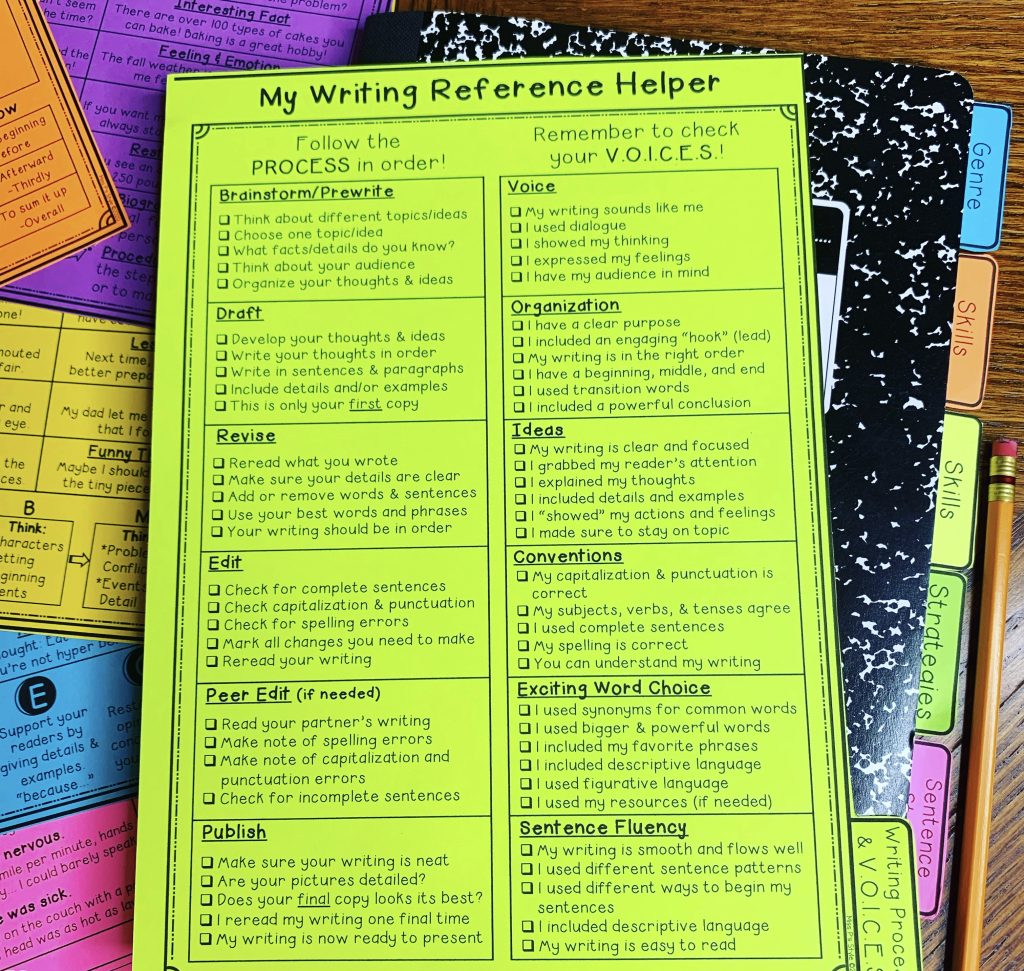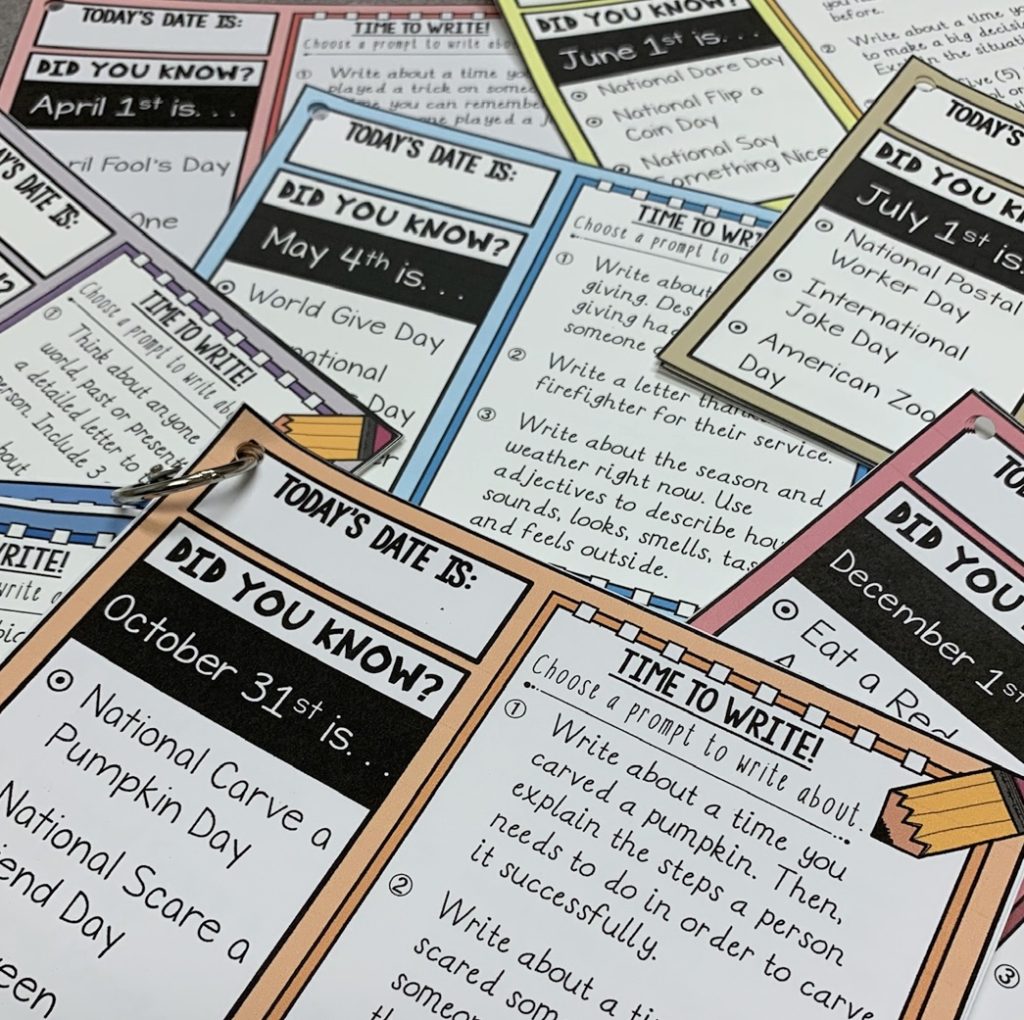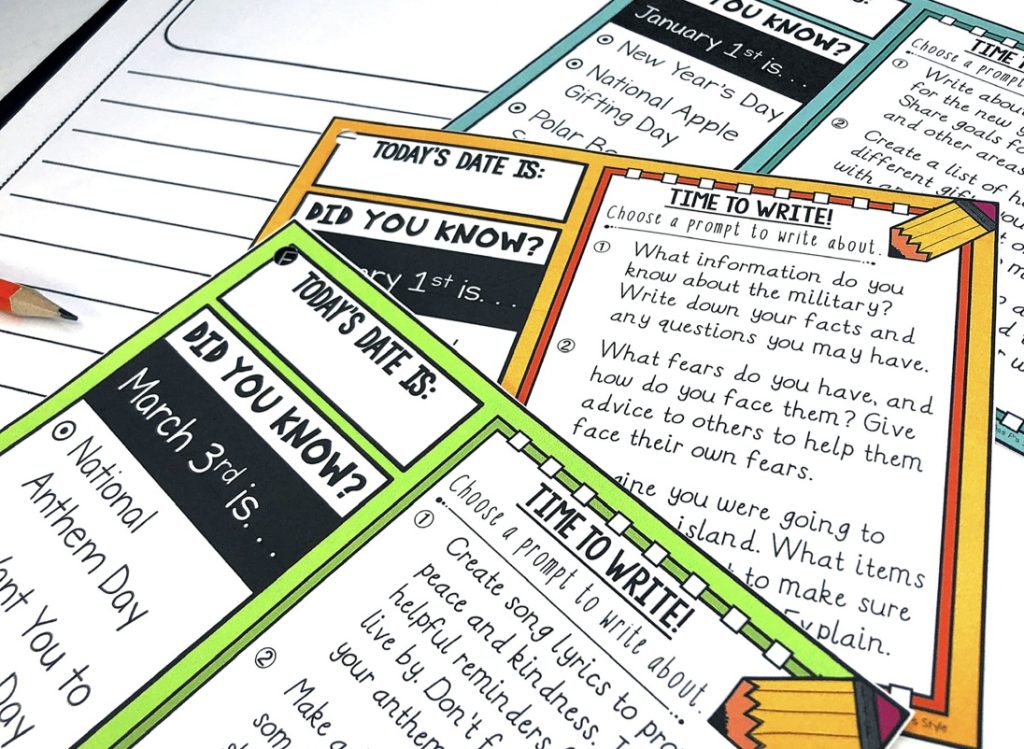
The Writing Process: 6 Best Practice Tips
The writing process is an essential journey that all students embark on to transform their thoughts into well-crafted writing pieces. As teachers, it’s our responsibility to guide our students through this process, helping them develop the skills and confidence needed to become proficient writers. I am going to dive into six best practices that can make the writing process second nature to your students where they are flowing from step to step with ease and mastery. Could you close your eyes and envision it? Together, we can make this your classroom reality!

Tip 1: Use a Variety of Writing Prompts
Writing prompts are a fantastic tool for kickstarting the writing process. They strike a balance between freeform creativity and structured writing, making them ideal for helping students understand and navigate the various stages of writing. It’s crucial to expose students to a variety of writing prompts across different genres. This exposure broadens their horizons, allowing them to explore various writing strategies specific to different types of writing. By doing so, students can better understand what each genre demands and how to approach it. I have included a FREEBIE at the bottom of this post so that you can have writing prompts to incorporate into your daily writing. Check them out when you’re done reading through these six tips!
Tip 2: Have Students Write Daily
Writing daily should become a cornerstone of your teaching routine. Prioritize it and be intentional about it. Encourage your students to write every day, as this practice has numerous benefits. Daily writing helps boost students’ writing stamina, improves their organizational skills, and enhances the flow of their compositions. It also provides more opportunities for creativity and skill experimentation. Writing daily prevents feelings of frustration and overwhelm, and ensures that the writing process can continually rotate from composition to composition no matter the genre. Don’t get in a situation where there is a gap in writing and you have to take up so much time to get back into the routine. Keep your students writing every single day and watch their skills and writing process routine improve immensely.

Tip 3: Move at the Pace of Your Students
It’s essential to recognize, accept, and value that students work at different paces. Rather than rushing through the writing process, focus on one step at a time. Model each step clearly, and be prepared to provide additional guidance when necessary. If your students need more hand-holding before being let free, HOLD THEIR HANDS. It is much like riding a bike. We would never put a child on a bike and say GO! There are training wheels and even then, you are probably close by in case they wobble and fall over. Well, lots of wobbling is going to happen as students are experimenting and exploring with this writing process. Move one step at a time together, walking beside your students. Let them know that you are there to support them and that we have these steps because the writing process is massive and we want to break it apart into tiny bite-sized pieces that we, ourselves, can handle. Patience is key; don’t be discouraged if mastery doesn’t happen overnight. Consistency and gradual progress are the ultimate goals.
Tip 4: Conference With Your Students Throughout the Process
Regular, daily conferences with students are crucial to ensure they are progressing through the writing process effectively. Whether through one-on-one sessions or small group discussions, these conferences allow you to identify any skipped steps or areas that require more attention. Trust me, I know that when all students are doing something, like in this instance writing, this is the perfect time to drink some coffee, check email, check a text, or just take a breather and sit down. But we have to be on guard like hawks – scanning the room, being on the floor, and assisting our kids. Celebrate students’ achievements and commend them when they successfully apply a skill or strategy you’ve taught. Active involvement during these conferences keeps students accountable and engaged in the writing process.

Tip 5: Explain the “Why”
Kids often wonder why they have to do something and without a clear understanding, they don’t see the purpose or the reason for having to do it. To keep students motivated and engaged, explain the purpose behind each type of writing and the significance of each step in the process. Help them understand how their writing can go beyond merely earning a language arts grade; it can inform, persuade, and inspire others. For instance, when teaching informational writing, emphasize how it contributes to informed decision-making in society. By understanding the “why” behind their writing, students will approach the process with greater enthusiasm and purpose.
Tip 6: Experiment With Different Writing Skills and Strategies
While it may be tempting to stick to one tried-and-true writing strategy, it’s essential to encourage students to experiment with various techniques. There’s no one-size-fits-all approach to writing, as different strategies may be more effective for different topics and individuals. Allow students to explore and find the strategies that align with their strengths. Provide them with a range of options through anchor charts or scaffolded examples, helping them make informed choices. This fosters creativity, builds confidence, and shows students that there’s no limit to the ways they can respond to any writing prompt.
Incorporating these six best practices into your teaching approach will help make the writing process second nature to your students, and I hope you feel excited about making sure the process is instilled in your writing block or structured writing time. As your students explore a variety of writing prompts, write daily, progress at their own pace, receive guidance through conferences, understand the “why” behind their writing, and experiment with different strategies, your students will become proficient and confident writers using the writing process. Embrace these practices, and watch your students flourish as they journey through the wonderful world of writing. And of course, any time you need a refresher, these 6 tips are going to be right here on this blog, waiting for you!
If you missed the information on the writing process and how each step is broken down, check out this post. It will walk through the importance of each step and what each one entails. Students often do not truly understand what is expected during each step so this post will break it down for you!
Monthly Writing Prompts Freebie!
Here is a FREE SAMPLE PACK of my popular monthly writing prompts for you to use. These versatile prompts not only inspire creativity but also guide students through the writing process. Choose any day to ignite your students’ passion for writing and watch them transform their quick writes into full-fledged compositions.
When using these, feel free to use any of these days to hook your students and to get them writing, for it does not have to be the actual day you are writing on. Show them the National Day, give them a prompt of your choice, and let them confidently walk through the writing process!


Share it:
- Read more about: Teacher Tips, Writing
You might also like...

Hey, I'm Megan!
I am a literacy specialist and curriculum designer who loves sharing tips and ideas to help students thrive in literacy! It brings me joy to await those a-ha moments and to see light bulbs turn on!
I have a huge passion for reading and writing and love to co-mingle the two any chance I get! You can expect to learn new strategies and ways to keep your students engaged during your literacy block! I am so glad you’re here!




